What is an FUE hair transplant in Turkey?
FUE hair transplant is a technique where single hair follicles are taken from one area and implanted into thinning or bald spots. It's popular because it leaves no big scars and looks natural, unlike the older FUT method.

This hair transplantation technique is suitable for patients with hair loss over a large area. At the same time, the patient must have sufficient hair in the nape area (donor area) and suitable for transplantation. If your hairline has receded and you are considering hair transplantation, you can receive FUE hair transplantation treatment at Hair and Esthetic Istanbul.
FUE hair transplants are gaining huge popularity in Europe and Turkey, and it's easy to see why. According to the International Society of Hair Restoration Surgery (ISHRS) 2022 report, the global hair restoration market is worth a massive $4.5 billion. That's big business!
The same report shows that most hair restoration patients (around 87%) are men, while 13% are women. And here's an interesting stat: FUE is by far the most popular method among men, making up about 75% of all procedures. It's clear that FUE has become the go-to choice for natural and long-lasting results.
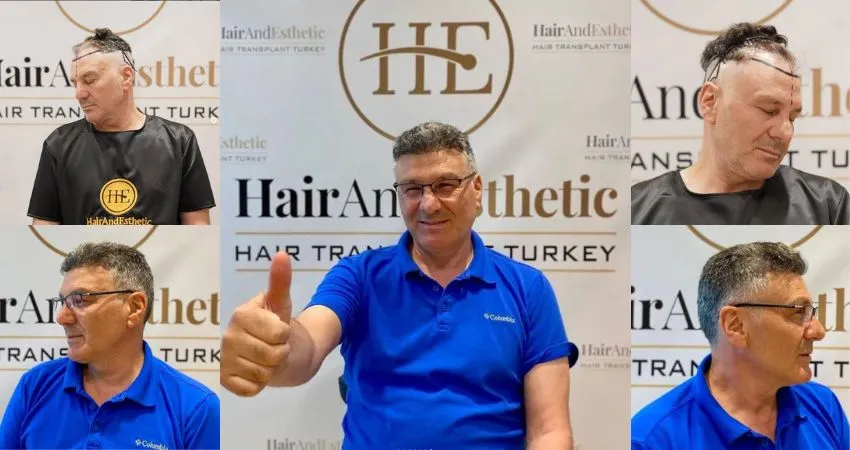
FUE hair transplantation technique we are able to take out more hair follicles (grafts) then before. Thanks to this technology that we can remove and plant the grafts in our patient's head without any damage.
Good candidates for FUE hair transplants in Turkey
|
Criteria |
Details |
|
Donor hair |
Healthy hair on back/sides |
|
Hair type |
Thick, wavy, or curly is preferred. |
|
Hair density |
Enough grafts for good coverage |
|
Health status |
Good overall health for healing |
|
Consultation |
Doctor evaluates and plans grafts. |
|
Expectations |
Realistic goals for the procedure |
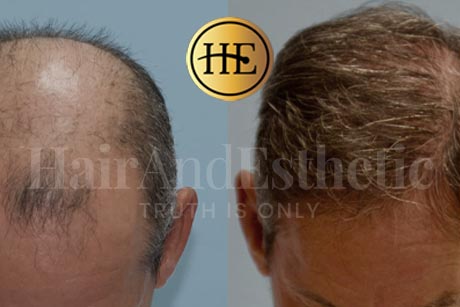

How to prepare for an FUE hair transplant in Turkey?
You should stop smoking the day before your Fue hair transplant Turkey procedure. Since smoking disrupts blood flow, the healing time of your scalp will be prolonged. You will also become vulnerable to infection. You should also stop drinking alcohol before the procedure. It slows down the healing by thinning your blood.
If you use blood thinners such as aspirin, you should inform your surgeon before the FUE hair transplant procedure. The surgeon may tell you to stop the medication by evaluating your special situation. It is also important to inform your surgeon about all other medications you use.
Another tip? Make sure that you have the blood tests your surgeon has ordered and that you receive the treatments your surgeon recommends, such as PRP or Mesoteraphy. These steps ensure that everything is ready for a smooth and successful procedure.
FUE hair transplant procedure step by step
You are planning to get an FUE hair transplant from Hair and Esthetic Turkey and you are curious about the process. Then let's talk about how the procedure is done step by step.
Outlining the donor and recipient areas
First, the surgeon marks the areas for transplant. This includes designing the hairline and deciding where the grafts will be taken from. They'll confirm everything with you to ensure the plan matches your goals. For example, if you want the crown filled, the surgeon will focus on that area! Not just the hairline.
Administering anaesthesia
Next, your scalp is numbed with local anesthesia. Some surgeons may also give mild sedation to keep you extra comfortable during the procedure.
Preparing the recipient sites
If the surgeon starts with the recipient area, they'll create tiny slits where the hair grafts will go. They might even test a few grafts to make sure they fit perfectly into the prepared sites.
Harvesting grafts
Once the recipient sites are ready, the surgeon extracts the required number of hair grafts from the donor area. Some surgeons prefer to harvest grafts first and then prepare the recipient sites based on the number of grafts available.
Placing the grafts
Finally, the hair grafts are carefully placed into the recipient sites at precise angles. This step is crucial for a natural look and requires a lot of skill. Trained staff often assist with this part to ensure everything is done efficiently and accurately.
And that's it! It's like planting seeds! Each one is placed just right to grow naturally and blend perfectly with your existing hair.
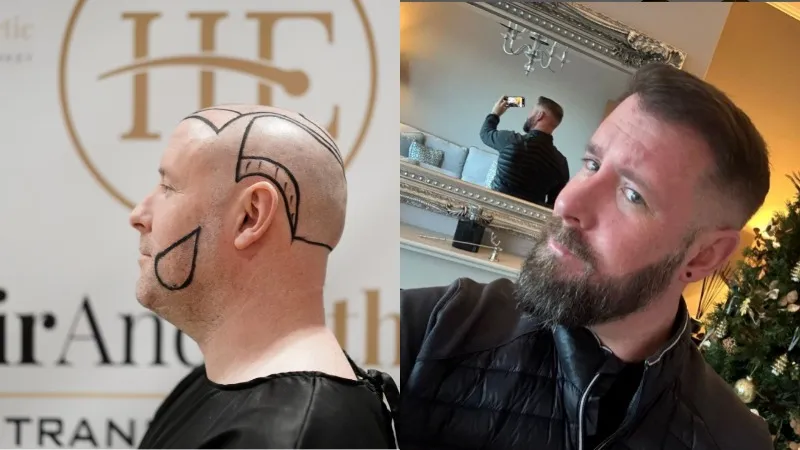
General steps
Trimming: The surgeon trims the hair in the donor and transplant areas for better access.
Follicle removal: Individual follicles are taken out using a tiny, precise tool.
Prepping the area: Small openings are made in the transplant area to place the follicles.
Placing the follicles: Each follicle is carefully implanted into the prepared spots.
Angle matching: The surgeon makes sure the follicles are placed to match your natural hair direction.
Cleaning up: The area is cleaned to keep it safe and ready to heal.
Bandaging: A bandage is applied to protect the treated areas during recovery.
What to expect after a FUE hair transplant in Turkey
|
Action |
When |
|
Take painkillers. |
First 3 days |
|
Avoid washing hair. |
At least 3 days |
|
Use gentle shampoo. |
After 3 days |
|
No combing/brushing |
3 weeks |
|
Skip hats/headwear |
Until the doctor approves |
|
Avoid physical activity. |
1 week |
|
Expect hair shedding. |
First few weeks |
|
Notice new growth |
3-4 months |
Recovering from FUE is quick. Expect mild swelling for a few days paracetamol can help. Don't wash your hair for three days, and use a gentle shampoo after that.
No combing or brushing for three weeks, and skip hats or tight clothing on your scalp until your doctor approves. Avoid heavy exercise for a week.
It's normal if some hairs fall out early on. New growth starts in 3 to 4 months, with full results over time. Take it easy, and you'll see great results!
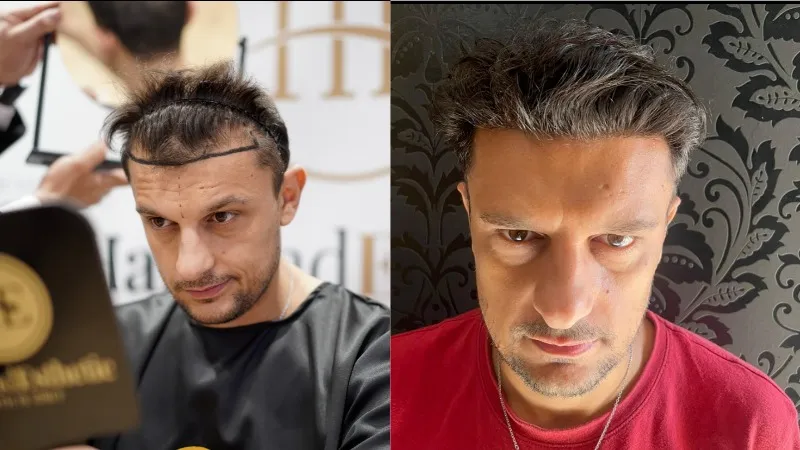
How does a FUE hair transplant work?
FUE hair transplant is a process where healthy hair follicles are taken from one part of your scalp and moved to areas with thinning or no hair. It's like carefully relocating tiny plants from a full garden to a bare patch! They keep growing naturally in their new spot.
The process starts with the surgeon extracting tiny groups of 1 to 4 hairs using a tool so small it's less than 1 mm wide. No big cuts, no big scars. Then, those follicles are carefully implanted into the thinning areas, one by one, at the perfect angle to match how your hair naturally grows.
Why is the angle so important? It's what makes the new hair look seamless, like it's always been there. After the procedure, these follicles connect to your blood supply and start growing hair in their new home.
What's next? Over time, those thin or bald areas fill up with healthy, growing hair. The result? A fuller, natural look that feels just like your own hair. Simple, right?
FUE vs. FUT: Which hair transplant method is better?
|
Aspect |
FUE |
FUT |
|
Method |
Individual follicles |
Strip of skin |
|
Scarring |
Tiny dots fade over time. |
Long, visible scar |
|
Recovery |
About 1 week |
Several weeks |
|
Precision |
Highly precise |
Less precise |
|
Appearance |
Natural-looking results |
Can look less natural |
|
Pain/Discomfort |
Minimal |
More noticeable |
|
Healing Area |
Scalp |
Scalp and strip incision |
|
Popularity |
Modern, widely preferred |
Older method |
In FUT, the surgeon removes a strip of skin from the back of your head to extract follicles. It leaves a long scar and requires weeks to heal. It's effective but less discreet.
FUE is different. Hair follicles are taken one by one directly from the scalp. This means no large scar, just tiny dots that fade with time. Recovery is much faster, usually about a week.
FUE also allows for a more natural look since follicles are implanted at precise angles. If you want less scarring, faster recovery, and natural results, FUE is often the better choice.
Is FUE hair transplant painful?
Not really! You will be given a local anaesthetic to the area before the procedure by your surgeon. When it is applied, you may get a slight sensation of stinging, but after that you will not experience any pain during the transplant.
What about discomfort? You might feel a bit stiff or awkward sitting through the procedure, but there's no actual pain. Most people say it's easy to manage.
And after the transplant? It may be slightly sore or tender for a few days, but this usually goes away within a week. FUT is a more conventional approach to hair restoration and is relatively more invasive than FUE; FUE is much more comfortable.
Briefly? It's a modern, minimally invasive process designed to keep you as comfortable as possible. With a little patience, you'll breeze through it.
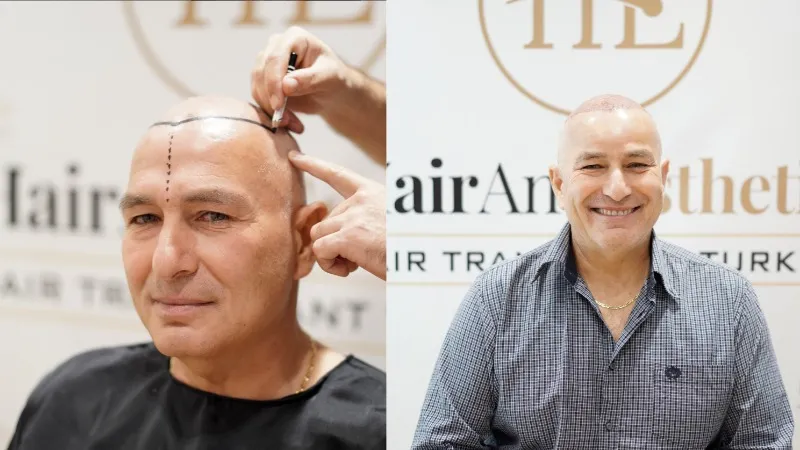
FUE hair transplant cost
It really depends! There's no fixed price because every case is different. The level of hair loss is an important factor!
A lot of factors come into play! How many grafts you need, the complexity of your hair loss, your hair's colour and texture, and even how long the procedure takes.
Good clinics, like the Hair and Esthetics Clinic, also think ahead. They assess the risk of future hair loss and make sure they don't overuse your donor area. Why? To leave enough hair for a possible top-up in the future.
It's like planning a renovation. You don't just fix what's broken today! You think about what might need attention later. The cost reflects a long-term, personalised plan to keep your hair looking its best.
You can contact us to learn more info about FUE and the current FUE hair transplant price.
Does FUE hair transplantation cause scars?
Yes, but they're minimal. FUE leaves tiny dot-like scars where the follicles are taken from, but these are so small they're almost invisible once healed.
Will anyone notice? Probably not. The donor area scars are so fine they're hidden by your existing hair, even with short styles. The recipient area is even harder to spot unless examined up close.
How is FUE different from older methods? Unlike the old strip methods (FUT), which leave a long scar, FUE is far less invasive. When done by an experienced doctor at a reputable clinic, the scars are nearly undetectable to the naked eye.
Think of it this way: it's like taking individual seeds from a garden instead of cutting a branch. The marks are so subtle they blend right in!
FUE hair transplant success rate
FUE hair transplants are incredibly successful, with a 98% success rate for most patients. For this reason, it is ranked among the best and most efficient hair restoration procedures in the market. The results? Healthy hair that looks real and which continues to grow for several years.
But what affects success? A few factors play a big role: the skill of the surgeon, the health of the donor hair, and how well one obeys the after-surgery care. A good surgeon also makes sure that every graft is put in the right place to mimic the natural hairline.
At Hair and Esthetics Clinic, we take pride in achieving these high success rates. We not only focus on precision but also create personalised plans for every patient. This ensures the best results, both now and in the future.
With FUE, you're not just getting a transplant! You're investing in a natural, confident look that lasts. And in the hands of the right team, the results speak for themselves!
Will I need time off work after FUE hair transplant surgery?
Yes, but not much. For desk jobs or non-physical work, most people are back in 2 to 4 days. If your job involves heavy lifting or physical activity, it's better to take about a week off to heal.
What about the redness and scabs? You'll have some redness and small scabs for a week or two. If you're okay wearing a hat, you can head back sooner. But if you don't want anyone to notice, taking extra time off might be a good idea.
How can I recover faster? Follow your aftercare instructions. Avoid heavy exercise, sweating, and sun exposure for the first week, and healing will be quicker.
With proper care, you'll be back to work and feeling great in no time!
Choosing the right surgeon for FUE hair transplant Istanbul
Picking the right surgeon is crucial for great results. Start by checking their credentials, certificates, memberships, and experience. Review their before and after photos and read patient reviews to see their work.
An ethical surgeon stands out! They'll tell you if a transplant isn't the right choice for you. Honesty shows they care about your long-term results, not just the procedure.
Make sure they take time to understand your goals. A good surgeon will create a personalised plan, possibly including medication to slow future hair loss.
Remember, the right surgeon isn't just skilled! They're someone you can trust to guide you through every step.
How long does a FUE hair transplant last?
FUE transplants are designed to be permanent. The transplanted hair comes from areas resistant to hair loss, so it keeps growing for a lifetime.
What factors? Factors like your age, genetics, and ongoing hair loss in untreated areas can play a role. Proper aftercare and following your surgeon's advice also help maintain results.
It's a long-term solution, but keeping the rest of your hair healthy matters too!
FUE hair transplant recovery time
Recovery is quick. Most people are back to their normal routine within 3 to 4 days. The donor area heals on the surface in about 2 weeks, but full healing, including scars fading and blending with the skin, takes up to 3 months.
The best results, with fuller and thicker hair, become visible between 9 to 12 months. It's a gradual process, but the results last a lifetime!
Does FUE hair grow back?
Yes, absolutely. After the procedure, some transplanted hairs may fall out temporarily (this is called shock loss), but the roots stay in place. Over the next 3 to 4 months, new healthy hair begins to grow.
Is it permanent? Yes! Once the hair grows back, it's permanent and behaves just like the rest of your natural hair. Full results usually show by 9 to 12 months, giving you thicker, natural-looking hair. It's a process, but the results last a lifetime!
When can I shower after an FUE hair transplant in Turkey?
You should wait at least 24 to 48 hours before showering to protect the transplanted hair and healing areas. For the first wash, avoid direct water pressure from the shower.
Can I use regular shampoo? Not yet. Stick to the gentle, unscented shampoo recommended by your clinic. Follow their instructions carefully to avoid damaging the new grafts.
Taking it slow in those first few days helps ensure the best results!
How common is shock loss after FUE?
Shock loss happens to about 60 to 80% of people after a hair transplant. It usually starts around three months after the procedure, when the transplanted hair temporarily sheds.
Should I be worried? Not at all. Shock loss is completely normal. The roots stay intact, and new, healthy hair will grow back in the coming months.
Think of it like pruning a tree! Some leaves fall, but stronger growth is on the way. In 9 to 12 months, you'll see the full, natural results!
Do you have to shave your head for FUE?
Not necessarily. Some surgeons prefer shaving because it makes their job easier. So, they can see and access the donor area more clearly. But it's not always required.
What if I don't want to shave? Good news! Many clinics offer unshaven FUE options, especially for smaller procedures. It might take a bit longer, but it's perfect if you want to keep your current hairstyle.
Shaving is just a convenience for the surgeon, not a rule. Your clinic can tailor the procedure to suit your preferences while still getting great results!
FUE hair transplant for women
FUE works great for women and doesn't always require shaving. Instead, small sections of hair are taken from hidden areas, keeping the process discreet.
Is it harder for women? Not really, but it does require extra care. Women's hair loss is usually more spread out, so the surgeon focuses on creating natural and even coverage.
Do the results look good? Definitely! With the right surgeon, the results are natural, seamless, and long-lasting.
It's an excellent option for women dealing with thinning hair or receding hairlines, giving a big boost of confidence!
FUE hair transplant for afro hair
FUE works well for afro-textured hair, but it requires extra precision. The curl pattern extends beneath the scalp, so the surgeon needs experience to extract the follicles without damage.
Is it harder to transplant? A bit, but with the right tools and an expert, the results are excellent. Afro hair gives great coverage and blends naturally after the transplant.
How can you sleep after an FUE hair transplant?
For the first week, you'll need to sleep with your head elevated; about a 45-degree angle is best. Why? It reduces swelling and keeps pressure off the grafts, helping them heal properly. Use a recliner or stack a couple of pillows to keep comfortable.
Can I sleep on my side? Not right away. It's important to avoid rubbing or touching the transplant area, so stick to sleeping on your back for about 7 to 10 days.
Think of it as giving the grafts a gentle, pressure-free environment to settle in. After the first week, you can slowly return to your normal sleeping positions. Following these steps makes a big difference in protecting your new hair!
Can you transplant hairs from someone else?
No, it's not possible and for good reason. Your body would see the hair as foreign and reject it. This can lead to scarring, infections, and a failed transplant.
Hair transplants only work when the donor hair comes from your own scalp. It's like planting a tree! You need roots that belong to the same soil for it to grow successfully. Using someone else's hair simply isn't safe or effective.
Can you have more than one FUE hair transplant?
Yes, if you have enough donor hair. A good clinic plans carefully to leave room for future transplants in case of more hair loss.
The risk? Overharvesting the donor area in the first procedure can make a second transplant difficult. That's why choosing an experienced clinic is so important.
Are there side effects of FUE hair transplants?
Not many, but there are a few things to keep in mind.
You won't have big scars! Just tiny white dots where the hair was taken, and those fade over time. Serious issues are rare. But if you notice signs like pain, swelling, or infection around the area, inform and visit your surgeon. Crusting, bleeding, or unusual drainage? That's also worth checking out.
What about the new hair? Sometimes, the transplanted hair might not blend perfectly, or you could still see some thinning over time. And folliculitis (a bit of swelling around the follicles) can happen, but it's easy to treat.
For most people, the risks are minimal, and the FUE hair transplant results are totally worth it!
What are difference FUE vs. FUT vs. DHI?
|
Feature |
FUE |
FUT |
DHI |
|
Hair Follicle Extraction |
Individual follicles with a tiny tool |
A strip of skin from the donor area |
Individual follicles using a special pen-like tool |
|
Scarring |
Small, dot-like scars |
Linear scar |
No visible scars |
|
Recovery time |
5-7 days |
2-3 weeks |
5-7 days |
|
Ideal for short hairstyles |
Yes |
No |
Yes |
|
Graft Implantation |
Placed manually |
Placed manually |
Directly implanted into the scalp |
|
Procedure time |
6-8 hours |
6-8 hours |
8+ hours (slower process) |
|
Pain |
Minimal |
Moderate |
Minimal |
|
Natural results |
Excellent |
Good |
Excellent |
|
Cost |
Moderate |
Lower |
Higher |
Each method has its own strengths. FUE and DHI are great if you want minimal scarring and a quick recovery, perfect for short hairstyles. FUT, while leaving a linear scar, can provide more grafts in one session and is often more affordable. DHI stands out for precision since grafts are implanted directly, but it takes longer and costs more. It all comes down to your goals, budget, and how much downtime you can handle!
